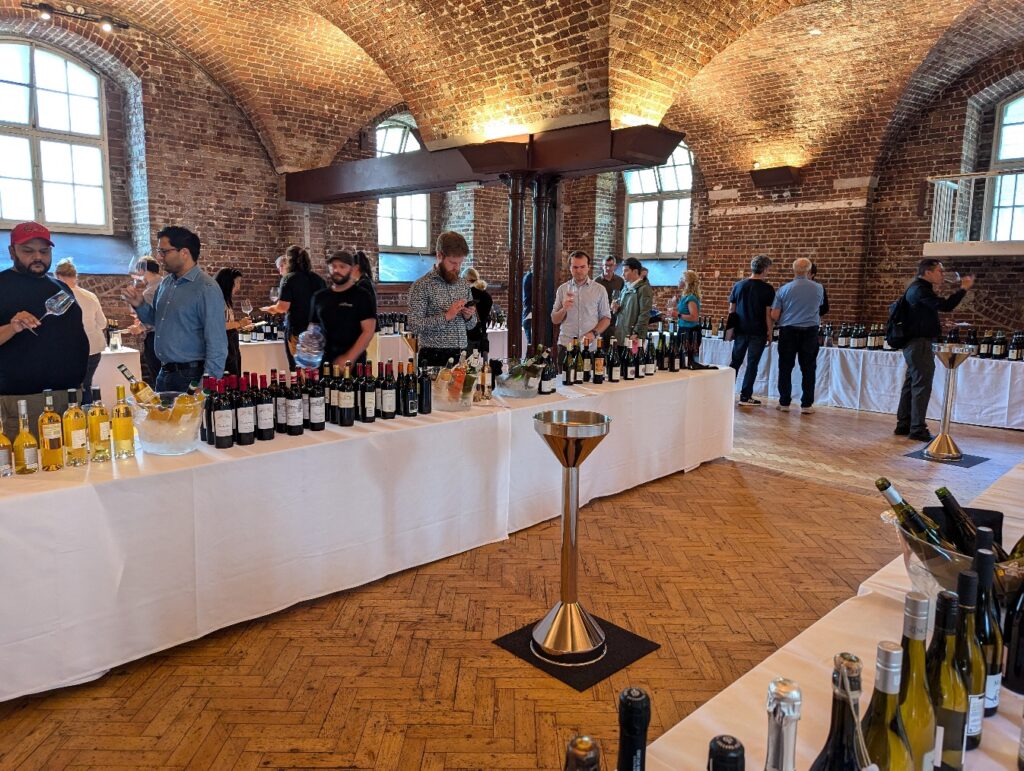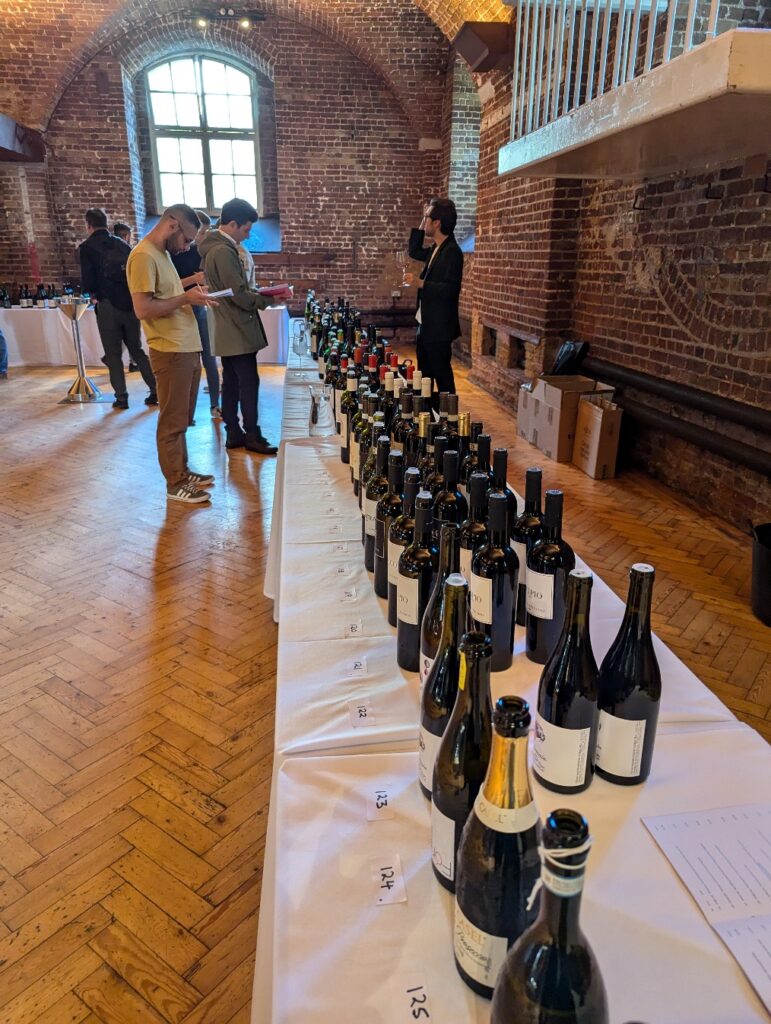
Swig is an online retailer founded by Robin Davis, 25 years ago, which has earned a reputation as one of the UK’s best independents. They also supply some of the UK’s top restaurants and independents, and in 2021, Decanter Magazine awarded them Best Midsize Online Retailer.
In September 2024, I attended the Swig Autumn Portfolio Tasting at Crypt on the Green. The venue’s naturally cooler temperature was ideal for showcasing red wines at their best, a refreshing change from warmer venues that can sometimes compromise the tasting experience. The event featured 265 wines, with a particularly wide range of Italian and South African selections, alongside offerings from England, Spain, Hungary, Austria, Australia, Bulgaria, Germany, Portugal, the USA and France.
Although there were so many great wines to sample, several stood out as particularly memorable:

Whites
The SOLI Blanc Miroglio 2022 (13.5%, £15.00), a fascinating Bulgarian wine from the Thracian Valley, is a blend of Chardonnay, Sauvignon Blanc, Riesling and Gewurztraminer. This wine presented a straw-yellow hue with a strong aroma of peaches, citrus and apples. On the palate, it was rich, creamy, and slightly smoky, with a long, satisfying finish.
The DIMENO Catarratto 2023 (12%, £14.95) from Alcamo, Sicily, was a low-intervention wine that is unfiltered, giving it a cloudy appearance if shaken. The Catarratto grape imparted a floral aroma with a slight citrus-orange taste that lingered delightfully on the palate.
Another standout was the Cremant de Limoux A La Volee Brut Nature 2021 (12.5%, £23.50), made by an ex-Champagne producer using the traditional Champagne method. This blend of 63% Chardonnay, 25% Chenin Blanc and 12% Pinot offered a brioche nose and a butterscotch-citrus flavour profile, with a slightly sweeter taste than typical Champagne, culminating in a long, biscuity finish.
The Champagne Collard-Picard ‘Perpetuelle 12 Annees’ Extra Brut NV (12%, £58.00), created from Grand and Premier Cru grapes, is a blend of 50% Chardonnay, 25% Pinot Noir and 25% Meunier. Swig claims it may be the best value luxury Champagne on the market, resembling Krug Grande Cuvee. It boasted a golden yellow colour, a fruity nose and a deep brioche aroma. The palate was fresh yet intense and complex, with a lingering finish.
Reds
The Au Bon Climat Pinot Noir 2020 (13.5%, £38.50), from Santa Maria Valley, was another memorable wine. Having previously enjoyed the 2021 vintage only two weeks previously and having it here side-by-side with the 2021, I found the 2020 slightly more intense. Again, a pretty, light colour with a full-on yet delicate cherry aroma and flavour, complemented by a hint of thyme. The wine had great length and complexity.
The Monte Santoccio range was particularly impressive. The Valpolicella Classico Superiore Monte Santoccio 2021 (13.5%, £24.00) had great cherry and balsamic notes, with a light yet intense body and a long finish. The Valpolicella Ripasso Monte Santoccio 2021 (14%, £29.00), a blend of 40% Corvina, 30% Corvinone, 20% Rondinella, and 10% Molinara, offered earthy cherry notes with a fruity sweetness that wasn’t overly sugary. The Amarone Monte Santoccio 2018 (16%, £54.00) had cherry, leather, herbs and spice notes. It was very well balanced, with a ready-to-drink tannins and a long finish.

The Scipio Tenuta Sette Cieli 2019 (13.5%, £76.00) was the best wine I tasted at the event. Made in tiny quantities and only released in the best years, this 100% Cabernet Franc from Italy impressed with its musky, gamey aroma and herbal, balsamic notes. The wine’s personality evolved as I tasted it, starting light and growing in intensity, with tannins emerging more at the end of the taste.
Another standout was the Blank Bottle BIG 2020 (15%, £38.50) from Swartland, South Africa. A blend from seven vineyards, this Cabernet Sauvignon had a nose of black fruit and wood, with ripe fruit, meaty spice and a long finish on the palate.
The Bedouet Le 109 Pinot Noir 2023 (13%, £16.50) surprised me with its light body yet deeply aromatic profile. Fragrant, earthy, and delicate, it offered a sophisticated taste with a hint of spice and light wood notes and excellent value for a French Pinot Noir.
The Vina Bosconia Rioja Reserva, Lopez de Heredia 2012 (13.5%, £33.50) also left a lasting impression. This Rioja, a blend of 80% Tempranillo, 15% Garnacho, and 5% between Graciano and Mazuelo, was matured in used American oak barrels for five years. Lighter in style yet with considerable depth, it showcased typical Rioja aromatics with a sweeter edge and a plum and cherry flavour profile with earthy oak notes.
Overall, the Swig Autumn Portfolio Tasting featured an impressive range of wines across a wide price spectrum. I was particularly taken by the Cremant de Limoux as a Champagne alternative and the expertise and great selection of Italian wines. However, the Scipio Tenuta Sette Cieli 2019 stood out as my favourite of the day.













